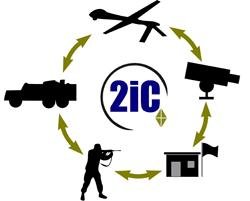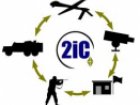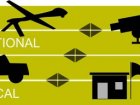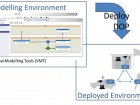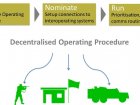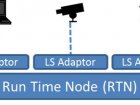2iC Limited
Despite the great ambition of Network Enabled Capability, the current approach to battlefield interoperability (which updates existing task specific military software with limited data sharing) is complex and continues to leave most assets and capabilities operating independently and unable to work co-operatively with other military systems.
From experience of observing the challenges and limitations of current interoperability, the 2iC software has been designed to deliver the power of enterprise middleware to coordinate distributed systems supplied by multiple vendors in challenging technical environments, such as the battlefield.
Battlefield Interoperability
2iC brings a new approach to battlefield interoperability. Its software enables users and experts to design Decentralised Operating Procedures (DOP) and easily deploy them into the distributed battlefield to meet military needs.
This unique approach is complementary to existing battlefield systems, assets and capabilities. It brings the flexibility, scalability and discipline of commercial enterprise orchestration software to the deployed and distributed environment of military operations.
Lean Services Architecture
The Lean Services Architecture is an open schema-based request/response and event message protocol and supporting architecture. It is designed to provide the features of a Services Orientated Architecture (SOA) in the operational and tactical military domain, or other similar environments using an implementation suited to such conditions unlike existing solutions.
The UK MoD has reviewed the Lean Services Architecture and included it in the Generic Base Architecture (GBA) Defence Standard (DefStan 23-13) and the Generic Soldier Architecture (GSA) Defence Standard (DefStan 23-12). It has also been proposed for the Generic Soldier Architecture (GSA) Defence Standard (DefStan 23-12).
The Lean Service Architecture was successfully trialled in October 2012 as part of the Land Open Systems Architecture (LOSA) development programme which is delivering the target architecture for Army 2020.
Decentralised Operating Procedure (“DOP”)
2iC Decentralised Operating Procedures (DOP) achieves business outcomes by defining the interactions across distributed systems. Every event, activity and data flow is in the context of a military objective and is tagged with security, priority and context information enabling effective systems interoperability. Once designed, DOPs are deployed to run alongside existing technology with negligible overhead.
Examples include requesting the use of a camera, patrol in contact or daily vehicle logistics reports.
2iC can provide interoperability across soldiers, vehicles and bases to support operational, technical and commercial flexibility.
Products/Services
Visual Modelling Tool
2iC’s Visual Modelling Tool provides a graphical user environment to model and define Decentralised Operating Procedures (DOPs). The work is typically performed with the end-users requiring the interoperability, the security accreditors and other supporting subject matter experts.
The flexible procedural coordination of systems is the goal of the 2iC Decentralised Operating Procedure (DOP) approach. Using visual models to represent and understand interactions, end-points, and business processes is a proven and routine approach in the enterprise, however until now equivalent tools have not been available for the tactical environment. 2iC delivers visual tools for defining DOPs that can be deployed to coordinate distributed systems in challenging technical environments.
Visual Modelling Tool to Deployed Environment
Off-the-shelf Adaptor Software Development Kit (SKD)
2iC have developed an off-the-shelf adaptor Software Development Kit (SDK) to allow any application to expose Lean Services. Using the SDK an adopter is easy to implement which hides the underlying systems while making useful business services available as Lean Services.
The SDK exposes Lean and connects to systems by whatever interface they possess, whether open or proprietary, without needing deep knowledge of that system.
This SDK could be supplied to any party to quickly enable the provision of Lean Services without exposing their system. This approach in effect allows closed systems to have an easily secured standards based open architecture for a subset of the system functionality.
Run Time Node
A low-footprint software component called a Run Time Node (RTN) which executes DOPs, manages service availability and dynamically coordinates the linked systems using Lean Services . RTNs are installed on platforms throughout the environment.
Once designed, DOPs are deployed to RTNs which run alongside existing technology with negligible overhead. Each deployed RTN connects to its local systems (such as sensors or other computers within a vehicle) using a Lean Service adaptor (analogous to an electrical travel adaptor) and links to RTNs at other locations via the available communications systems.



